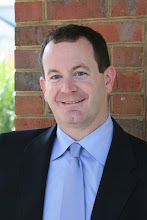Take off aborted!
Yesterday I was on a plane in the midst of take-off when the pilot slammed on the brakes. Not hit the brakes. Slammed them and hard! Being a very frequent flyer, I'd estimate that we were two-thirds of our way hurtling down the runway toward the magic point when the Bernoulli effect takes wings.
It didn't seem a lot different than being a passenger in a car and the driver hits the brakes for an unexpected yellow or red light. I looked up from my newspaper to see a very startled flight attendant, strapped in backwards and facing me. Later, I would learn that she was new on the job. I'm not sure if she will decide to report for work again.
After we stopped, the pilot, who I happened to know, announced that they aborted the take-off because of the wind shear. Wind shear, as we would come to learn, in this case was a severe cross-wind during the acceleration that makes the take-off unsafe and nearly impossible. He told us that it "would not have been good for the plane or any of us."
And then we taxied back to the terminal to wait out the severe storm. About 45 minutes later, we took off without fanfare in a normal fashion.
I think there is a lesson to learn here for those of us in the educational technology field. The take-off wasn't really aborted. It was simply stopped until the negative factors were reduced or eliminated.
I have advised countless groups who want to begin or expand a technology initiative in schools. However, somewhere along the way, wind shear occurs. In the midst of ramping up or accelerating the project, a significant factor changes the perceived safety of the initiative. And it comes to a screeching halt.
If the story ends there, the kids and teachers lose and I'm stranded at the airport. However, just like the pilot toward his destination, education leaders should monitor and adjust toward their goal either by finding a way to work around it, with it, or waiting out the challenge altogether.
Someday, I will be thankful that they did because the student who benefits may just be my pilot.
It didn't seem a lot different than being a passenger in a car and the driver hits the brakes for an unexpected yellow or red light. I looked up from my newspaper to see a very startled flight attendant, strapped in backwards and facing me. Later, I would learn that she was new on the job. I'm not sure if she will decide to report for work again.
After we stopped, the pilot, who I happened to know, announced that they aborted the take-off because of the wind shear. Wind shear, as we would come to learn, in this case was a severe cross-wind during the acceleration that makes the take-off unsafe and nearly impossible. He told us that it "would not have been good for the plane or any of us."
And then we taxied back to the terminal to wait out the severe storm. About 45 minutes later, we took off without fanfare in a normal fashion.
I think there is a lesson to learn here for those of us in the educational technology field. The take-off wasn't really aborted. It was simply stopped until the negative factors were reduced or eliminated.
I have advised countless groups who want to begin or expand a technology initiative in schools. However, somewhere along the way, wind shear occurs. In the midst of ramping up or accelerating the project, a significant factor changes the perceived safety of the initiative. And it comes to a screeching halt.
If the story ends there, the kids and teachers lose and I'm stranded at the airport. However, just like the pilot toward his destination, education leaders should monitor and adjust toward their goal either by finding a way to work around it, with it, or waiting out the challenge altogether.
Someday, I will be thankful that they did because the student who benefits may just be my pilot.
Labels: Education Technology Planning

